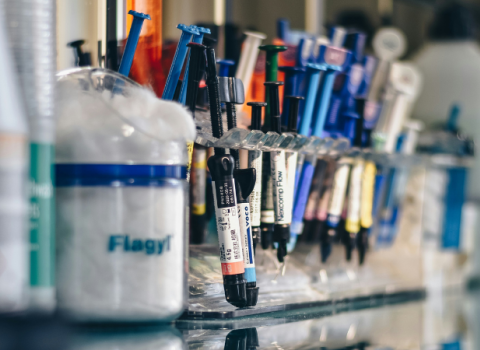
Sir David Cooksey, who chaired the report team
“The greatest problem the sector is currently facing arises from inadequate financing, not helped by the current economic climate,” says Sir David Cooksey, a venture capitalist who chaired the team of industry experts who compiled the report. “The flow of finance to emerging biotechnology companies from institutional investors has virtually ceased.”
“It is vital that this issue is addressed, otherwise the future of early stage bioscience companies is in doubt,” Cooksey adds. This is especially important as the pharmaceutical industry is increasingly reliant on biotechnology companies to develop products that may be licensed to them in their later stages of development.
“Increased financial collaboration between pharmaceutical and emerging biotechnology companies needs to be incentivised owing to the critical nature of this relationship,” says Cooksey.
This report is intended as an update to an earlier report ‘Bioscience 2015’, which was published in 2003. “Today, nearly six years later, one is bound to have mixed reactions about what has been achieved by the UK bioscience sector,” Cooksey says in his introduction.
Bioscience 2015 set out a vision for reshaping and enhancing the prospects for the sector, which at that point boasted of being the second largest in the world after the US.
While some objectives have been met, there has been little progress with others, such as enabling the sector to use the National Health Service’s computing systems as a research tool, establishing bioprocessing centres of excellence, and ensuring that the UK has a well trained bioscience workforce.
Bioscience 2015 was published shortly before the introduction of the EU Clinical Trials Directive. Cooksey says that rather than harmonising clinical trials activity across Europe, the Directive has had the opposite effect, with different member states implementing its requirements more, or less, stringently. “It must be reviewed to ensure consistency and to prevent Britain pricing itself out of drug development,” Cooksey adds. UK participation in global clinical trials dropped from 6 per cent in 2002 to 2 per cent in 2006.
The government action following publication of the Bioscience 2015 report was welcome, but despite all of the activity that ensued, the adoption of new therapies, drugs and procedures in the NHS remains painfully slow, says the new report. “The processes have been put in place, the public funding of biomedical research is improved but the translation of these improvements into patient benefit has not yet materialised.”
There is a dearth of funding for emerging biotechnology companies from private sector finance sources – the result of biotechnology companies failing to provide the returns needed to encourage investors to take the long-term risks involved. The problem has been exacerbated by the ever-increasing risks involved. Since the pharmaceutical industry requires a successful biotechnology sector to develop new products alongside it, the report includes ideas to encourage investment in biotechnology companies by pharmaceutical companies.
The BioIndustry Association (BIA) welcomed the Bioscience 2015 Review and Refresh report, noting the recommendations are the work of a broad coalition of stakeholders, including industry, the finance community, patient groups, research councils, academia and various government departments.
The BIA singled out the finance proposals, including the need for tax incentives for investors in biotechnology development, as being particularly important.
“Even before the current economic downturn, UK bioscience companies faced substantial challenges in raising finance,” said Clive Dix, BIA Chairman. “A new approach to funding is needed to bridge the gap left by institutional investors in order to retain a sustainable UK bioscience sector.”





 A unique international forum for public research organisations and companies to connect their external engagement with strategic interests around their R&D system.
A unique international forum for public research organisations and companies to connect their external engagement with strategic interests around their R&D system.